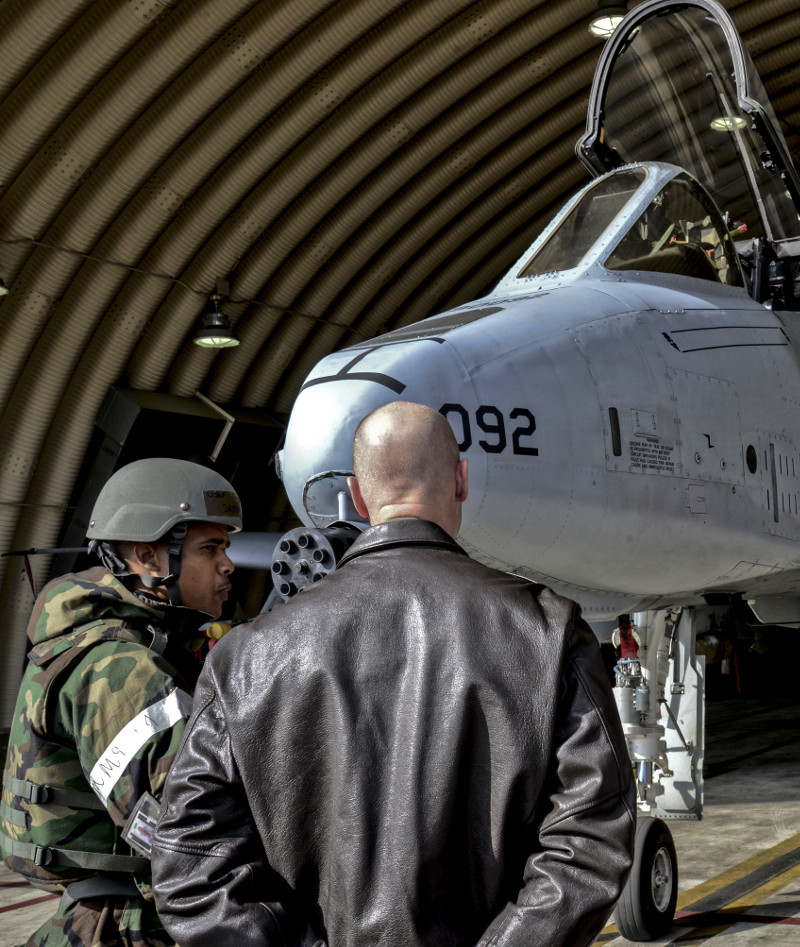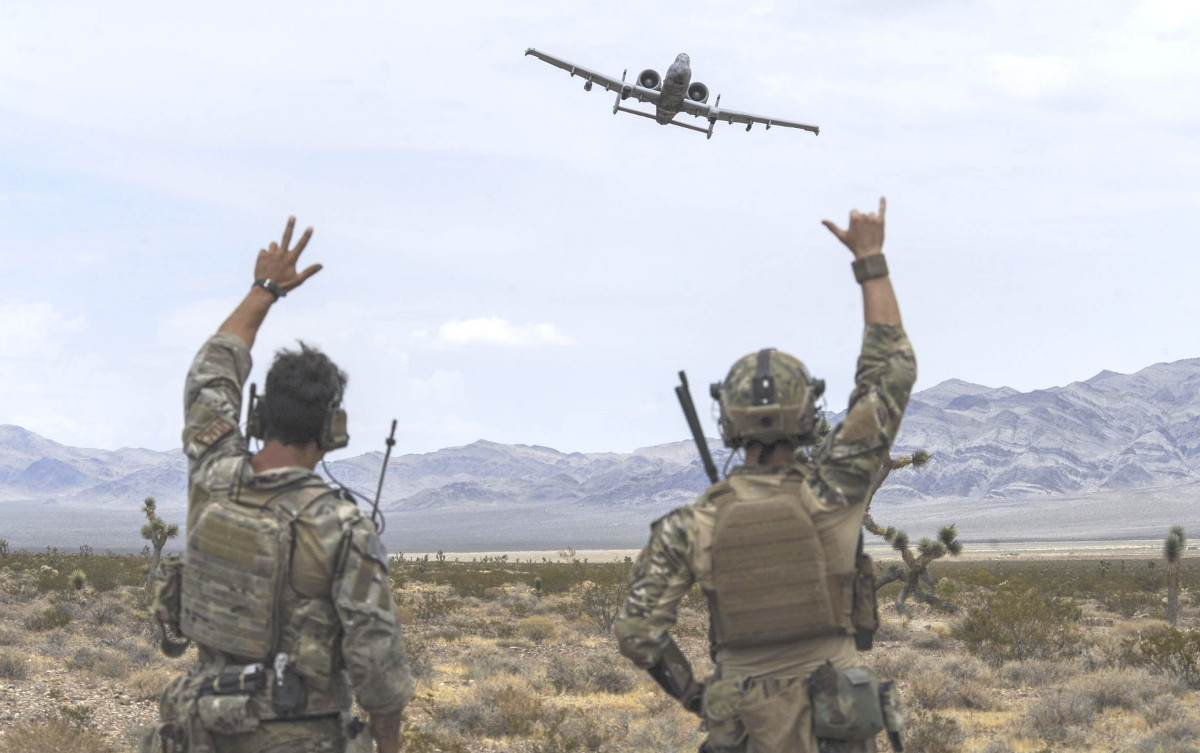Another, more complete version of a small official documentary on the A-10 Warthog ground attack aircraft’s contributions in Afghanistan has emerged nearly four years after Combat Camera airmen shot the footage. The service had apparently tried to suppress the film, officially known as “Grunts in the Sky,” as it pushed to retire the planes for good despite their record of “saving guys on the ground.”
The film quickly began to spread online in December 2017 and appeared on the unofficial Air Force amn/nco/snco Facebook group. The existence of the video first became public in September 2015, after former Air Force officer Tony Carr posted an initial version, known as “Hawg,” on his blog John Q. Public. Carr had been and continues to be an outspoken supporter of the service and its mission, but a vocal critic of its leadership and many of their decisions.
“It’s a pretty easy answer, too, in terms of ‘why are we here?’” one A-10 pilot says. “The number one priority is always saving guys on the ground,” another adds.
The mini-documentary, which runs just over 20 minutes long, is interspersed with combat footage in the air and on the ground, well-shot B-roll of A-10s in Afghanistan, and particularly candid interviews with Air Force aviators and joint terminal attack controllers (JTAC) embedded with troops on the ground. It’s definitely worth watching if you’ve never seen it before.

It’s also a microcosm of the Air Force’s complicated and often controversial relationship with the A-10. The story of the production of “Grunts” and why it’s taken so long for it to see an official release are almost as interesting as its actual content.
Since its introduction in 1977, the Air Force has repeatedly attempted to retire the A-10, arguing that other aircraft can adequately take over the role. Advocates in Congress, bolstered by support from troops on the ground, have repeatedly stymied those plans, though.
By 2014, the service had already made it clear that their desire was to replace both its multi-role F-16 Viper fighter jets and A-10s with the new F-35 Joint Strike Fighter. The debate over whether or not the stealthy jet is an adequate replacement for the Warthog had become increasingly tense.
In December 2014, now retired Air Force Major General James Post had created a massive controversy over the issue by implying to his subordinates that it was “treasonous” to offer support for the A-10 to members of Congress. In response to public pressure, in no small part from Tony Carr, the Air Force eventually booted Post from his job at Air Combat Command, before quietly moving him to the service’s headquarters in the Pentagon, effectively a promotion.

In February 2015, the Air Force had also released a set of cherry-picked statistics exclusively to USA Today that tried to paint the A-10 as responsible for the most friendly fire incidents, suggesting the aircraft was actually dangerous to troops on the ground. The next month, senior officials argued that the Warthogs were just too old to be relevant in combat or even safe to fly – not mentioning a deliberate decision to end critical life-extending upgrades, which remains an issue to this day.
Later that year, the service also began poaching maintainers from the A-10 community in order to support the formation of new F-35 units, something the service has only recently backtracked on. These various maneuvers, all aimed at putting the venerable ground attackers on a final path to the boneyard, are only a small slice of the broader battle over the Warthog, especially between the Air Force and Congress, that continues right to the present day.
In this context, it’s not hard to understand why the Air Force might want to bury a film that not only demonstrated the A-10’s unique contributions in combat, but included comments from its own service members underscoring just how important the aircraft were in contemporary operations. The subjects who sat down for interviews in “Grunts” do not mince words about their experiences.
Below is the first iteration of “Hawg,” which appeared online in 2015:

“To have boots on the ground, you need support and you need the right kind of support to have boots on the ground,” Air Force Technical Sergeant Sean Deam, a JTAC, says in the documentary. “It’s the A-10, honestly.”
Deam indicated that troops on the ground just knowing A-10s were on station could be a major morale boost. His fellow service members and Army soldiers that gave interviews echoed these sentiments.
“That sound it so distinguishable,” Staff Sgt. Joseph Hauser, another JTAC says, talking about the unmistakable noise of the A-10 firing its massive 30mm main gun. “It literally shakes the ground. It is amazing. You hear it first when it fires and then you hear it echo from the gun in the sky. That sound right there just drives 11-bravos nuts,” he adds, referring to 11B, the Army’s military occupation specialty code for infantrymen.
Hauser says that the troops he worked with equated close air support with the A-10 more so than any other platform. He then gives the remark that lent the film its title, saying that Warthog pilots and troops on the ground share a unique bond and that “if you were to say that there’s a grunt in the sky, it’d be a Hog pilot.”

In September 2015, Tony Carr updated the story by publishing more than 50 pages of internal Emails about the project on John Q. Public. These had come by way of another Freedom of Information Act request from Steven Mayne, a retired Air Force senior NCO.
Although censors had almost entirely redacted the contents, the Email chains showed that some of the service’s most senior officials had been involved in the discussions about what to do with “Grunts.” There were some additional details hidden among the blacked out sections, as well.
At one point, Air Force Lieutenant Colonel Edward Sholtis, then a public affairs officer for the Air Force’s top command for operations in the Middle East and Central Asia, asked everyone involved to delete any existing copies of the video they had until his office had made appropriate edits. “Because the units supporting the project were reservists, we don’t want to feed paranoia that there’s some kind of rogue video project out there,” he wrote, implying that there was such a concern, either inside the Air Force or somewhere else, regarding the handling of the documentary.
There are at least three versions of the film available online at present, including a version of the original “Hawg” that lacks any titles or other text to indentify its subjects and another edition closer to the final product in which all the faces are masked over. The Air Force had initially claimed that it could not release the video for security reasons.
You can watch the second version, “Grunts of the Air” below:

Tony Carr and others challenged this assertion since there had been apparently no issue in releasing a similar product highlighting the F-16 at around the same time. That the version the Air Force officially released under FOIA does not obscure the faces of an interviewees would seem to further suggest this was an excuse to withhold the video. The service did withhold names of the aviators involved, a standard practice when citing deployed personnel.
It’s not entirely clear why the Air Force decided now to release the film, but it might simply be because there were no actual legal grounds to withhold it any longer. It could also be a reflection of apparent shift in at least the service’s public attitude toward the plane.
In December 2017, Secretary of the Air Force Heather Wilson had told legislators she was a “fan” of the Warthog and supported plans to reboot a critical re-winging effort that could keep the entire fleet airworthy through at least 2040. Unfortunately, it looks as if that might not happen soon enough to avoid having to ground dozens of A-10s.
At the same time, we at The War Zone have confirmed the existence of draft requirements for a direct A-10 replacement and that they appear to be buried away in the Air Force’s bureaucracy. There is some indication that the service might seek to downplay or outright suppress the results of a separate light attack aircraft experiment, better known as OA-X, too.
It’s clear that while the saga over “Grunts” may finally have come to close, the one over the future and ultimate fate of the A-10 is likely to continue in one form or another until the aircraft does go to its final resting place.
Correction: The original version of this article indicated that the Air Force had released the “final” version of the film in response to a Freedom of Information Act request, but that was in error. The video emerged online, but a FOIA request to release the footage formally still remains unfulfilled.
Contact the author: joe@thedrive.com
